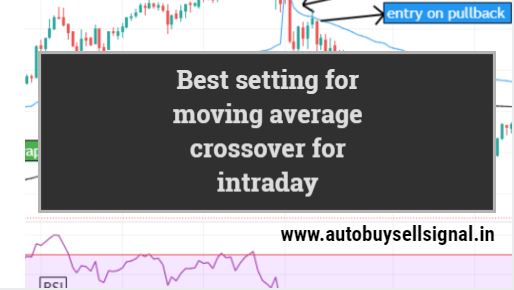
In fact, Moving Averages form the basis of several other well-known technical analysis tools such as the Bollinger Bands and the MACD. Because a Moving Average is a lagging indicator and reacts to events that have already happened, it is not used as a predictive indicator but as an interpretive one for confirmations and analysis. Noise is made up of fluctuations of both price and volume.

Essentially, Moving Averages smooth out the “noise” when trying to interpret charts. A Moving Average is a good way to gauge momentum as well as to confirm trends, and define areas of support and resistance. The difference between DEMA and TEMA is that TEMA’s formula uses a triple-smoothed EMA in addition to the single and double-smoothed EMAs employed in the formula for DEMA.Moving Averages are price based, lagging (or reactive) indicators that display the average price of a security over a set period of time.

Just like DEMA, the TEMA reduces the lag difference between different EMA. TEMA reduces the lag of EMAs and makes them more responsive to the prices.Īfter the Double Exponential Moving Average (DEMA) was developed in 1994, Patrick Mulloy created the Triple Exponential Moving Average (TEMA). The Triple Exponential Moving Average Indicator (TEMA)– Watch our Webinar on the Magic of Moving Averages 5. Changes in volatility are good indicators for a trend reversal, and hence, stock trades. Since the DEMA line mimics the stock prices most closely, it is, therefore, most sensitive to the stock volatility. The blue line indicates a simple moving average line, the purple line indicates exponential moving average (EMA), and the yellow line is the DEMA line.įrom the above chart, we can say that the DEMA is closest to the price points and with the least deviations. The Exponential Moving Average indicator of the last 9 periods of Nifty 50 is plotted as a line on the price charts as shown below: The formula is:Ĭurrent EMA = x Multiplier + EMA (Previous Time Period) The last step involves the calculation of the current EMA by taking the period from the initial EMA until the most recent time period, using the price, multiplier, and the previous period’s EMA value.Then we need to calculate the multiplier for weighing the exponential moving average.


The SMA Is the simplest moving average that is obtained by adding the most recent data points set and then dividing the total by the number of time periods. Linear Regression (or) Least square Moving Averages Indicator-īelow are 6 Types of Moving Averages that traders use when trading in the stock market: 1. The Triple Exponential Moving Average Indicator (TEMA). Double Exponential Moving Average Indicator (DEMA). Exponential Moving Average Indicator (EMA).


 0 kommentar(er)
0 kommentar(er)
